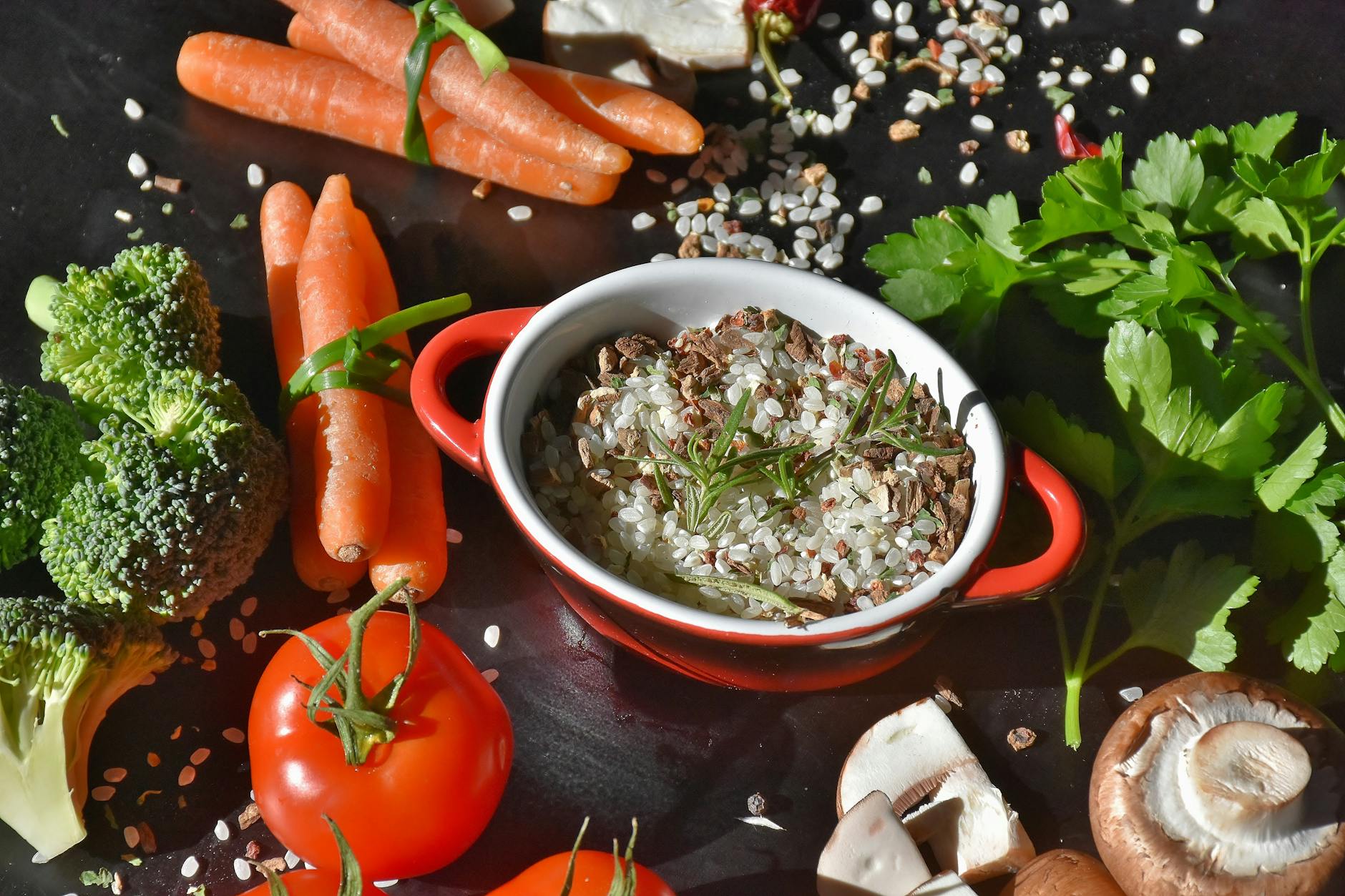Keto Diet for Beginners: Tips for Starting the Keto Diet
Welcome to your journey into the ketogenic diet! If you’ve heard of people losing weight and improving their health through this popular diet, you may be curious to learn more and get started. The keto diet can seem intimidating at first, but it doesn’t have to be. In this blog post, we’ll cover the basics of the keto diet, the benefits, and most importantly, the tips you need to get started. With the right guidance, you can begin to reap the benefits of the ketogenic diet in no time!
Understand the Basics of the Keto Diet
Are you considering starting the Keto Diet but don’t know where to start? Before jumping into the Keto Diet, it’s important to understand the basics of what it is and how it works.
The Keto Diet is a low-carb, high-fat diet that promotes weight loss by forcing the body to burn fat instead of carbohydrates for energy. The goal of the Keto Diet is to get your body into a state of ketosis, which is when your body starts to burn fat instead of glucose. While on the Keto Diet, your body will be using fats as its primary source of fuel.
There are many benefits to following the Keto Diet, including improved energy levels, weight loss, appetite control, and improved mental clarity. The Keto Diet can also help reduce inflammation and improve heart health.
When starting the Keto Diet, it’s important to understand the basics of the diet and what types of foods are allowed. The main principles of the Keto Diet are to eat high-fat, low-carb foods and limit your overall carb intake. This means eliminating processed foods, refined carbohydrates, and sugary snacks from your diet. Instead, focus on eating healthy fats, such as olive oil, avocado, and nuts, as well as lean proteins, non-starchy vegetables, and full-fat dairy products.
Once you’ve familiarized yourself with the principles of the Keto Diet and the types of food you should be eating, it’s time to get started. To ensure success, make sure you plan ahead and have a clear idea of what you’re going to eat. Meal planning and prepping can be especially helpful when starting the Keto Diet, as it will make it easier to stick to your diet and avoid unhealthy snacking. Additionally, it’s important to get enough sleep and exercise to keep your energy levels up.
Finally, be sure to stay patient and consistent with your Keto Diet. It may take a few weeks for your body to adjust to the new eating plan, so don’t be discouraged if you don’t see immediate results. With patience and dedication, you can reap the health benefits that the Keto Diet has to offer.
Make a Keto Meal Plan
Are you ready to start the Keto Diet, but don’t know where to begin? Making a Keto meal plan is one of the most important steps in beginning your journey. It helps you understand the basics of the Keto Diet, including the macronutrient ratios and the foods to include and avoid. It also helps you establish your goals and track your progress.
To make a Keto meal plan, first understand the basics of the Keto Diet. The Keto Diet is a low-carb, high-fat diet that involves limiting your carb intake to around 25-50 grams per day and increasing your fat intake. The goal is to enter a metabolic state called ketosis, where your body uses fat as its primary source of fuel instead of carbs. It’s important to note that there are different types of Keto Diets, so make sure you understand the differences before you start.
Once you understand the basics of the Keto Diet, it’s time to make a meal plan that fits your lifestyle, budget, and dietary preferences. Start by making a list of all the foods you’d like to include in your Keto meal plan. Make sure to include a variety of healthy proteins, fats, and vegetables. It’s also important to make sure you’re getting enough vitamins and minerals, so include some nutrient-dense foods like avocados, nuts, and leafy greens.
Finally, be aware of potential side effects and adjust your diet accordingly. Some people experience side effects like the “keto flu” when transitioning to the Keto Diet. Symptoms include fatigue, headaches, nausea, and brain fog. If you experience any of these symptoms, increase your intake of electrolytes, such as sodium, magnesium, and potassium, and make sure you’re drinking enough water.
By following these tips, you can make a Keto meal plan that fits your lifestyle and helps you achieve your goals. With a little bit of planning and preparation, you can be on your way to reaching your Keto Diet goals.
Know What Foods Are Allowed on the Keto Diet
The keto diet is one of the most popular diets today, and for good reason. It’s a great way to jumpstart weight loss and offers a wide range of health benefits. But before you jump in and start the keto diet, it’s important to understand the basics.
The most important part of the keto diet is knowing what foods are allowed and which ones should be avoided. The diet focuses on high-fat, low-carb food choices. That means foods like red meat, fish, eggs, nuts, and dairy are all good choices. On the other hand, foods like grains, fruits, and starchy vegetables should be avoided.
Once you understand the basic principles of the keto diet, it’s important to learn to read food labels and watch out for hidden carbs. Many foods, such as breads, cereals, and crackers, may seem like they’re low in carbs, but they can actually be quite high. It’s important to read the nutrition facts panel and look for the total carbohydrate content.
To make sure you’re sticking to the diet and getting the right amount of macronutrients, consider using online tools to help track your intake. There are a number of apps and websites that can help you keep track of your food and make sure you’re getting the right amount of fat, protein, and carbs.
Finally, don’t forget to incorporate healthy fats into your diet. Healthy fats like olive oil, coconut oil, and avocado are essential for satiety and energy on the keto diet. Consider including these foods in your meals and snacks for optimal results.
By following these tips and understanding the basics of the keto diet, you’ll be well on your way to a successful start.
Track Your Macros and Calories
Are you ready to start the keto diet but don’t know where to start? One of the most important steps in starting the keto diet is tracking your macros and calories. It’s essential to understand the basics of the diet and calculate your macros in order to reach your goals.
The keto diet is a high-fat, low-carb diet that puts your body into a metabolic state called ketosis. When your body is in ketosis, it begins to burn fat for energy instead of carbohydrates. To reach this state, you need to calculate your macros, which is the ratio of fats, proteins, and carbohydrates you should be eating on the keto diet. This ratio is typically 70-75% fat, 20-25% protein, and 5-10% carbohydrates.
Once you’ve figured out your macros, you need to count your calories. Because the keto diet is low in carbs, it can be easy to overindulge in high-fat foods. To ensure you are getting the right amount of nutrients, it’s important to track your caloric intake. Make sure you are eating enough calories to meet your body’s needs.
Finally, it’s important to monitor your progress. Keeping track of your weight and ketone levels will help you to adjust your diet as needed. With the proper tracking and monitoring, you will be able to reach your goals and stay on track with the keto diet.
By understanding the basics, calculating your macros, counting your calories, and monitoring your progress, you will be able to successfully start the keto diet. With a little patience and dedication, you will be on your way to reaching your health and fitness goals.
Be Mindful of Nutrient Deficiencies
The Ketogenic diet is a low-carb, high-fat diet that has become increasingly popular over the years. It is often used for weight loss and has been found to have numerous other health benefits, such as reducing inflammation, improving blood sugar levels, and even fighting certain types of cancer. As with any diet, it is important to understand the basics of the Keto diet and the macronutrient ratios recommended.
When following the Keto diet, it is important to focus on nutrient-rich foods like leafy greens, nuts, eggs, and healthy fats like avocados and olive oil. Eating these foods will help ensure that you get all the essential vitamins and minerals your body needs to stay healthy. It is also important to consider supplementing with multivitamins, calcium, and omega-3 fatty acids to ensure that you are getting enough of these important nutrients.
It is also essential to be mindful of electrolyte balance and hydration levels while on the Keto diet. Since the diet is high in fat and low in carbs, it can cause an imbalance of electrolytes, which can lead to health issues like headaches, fatigue, and muscle cramps. Drinking plenty of fluids and eating foods that are high in electrolytes, such as coconut water, can help prevent these symptoms.
By following these tips, you can ensure that you are getting all the nutrients you need while on the Keto diet. With proper planning and attention to detail, you can make sure you are getting the most out of your Keto diet experience.
Stay Hydrated

Also, it’s important to note that drinking too much water can sometimes lead to an electrolyte imbalance, so be sure to monitor your water intake.
It can be helpful to add a pinch of sea salt to your water to keep your electrolyte levels balanced.
You can also drink herbal teas, freshly-squeezed juices, and other healthy liquids to stay hydrated and energized.
Staying hydrated is one of the most important steps in starting the keto diet.
So, make sure to drink plenty of water and other healthy liquids throughout the day to help your body stay hydrated and energized.
Get Enough Sleep
Getting enough sleep is an important part of starting the keto diet. Getting enough sleep helps the body to adjust to the new dietary changes and helps to ensure that you are able to stick to the diet. Lack of sleep can lead to poor food choices and cravings for sugary and unhealthy foods.
A good sleep schedule when starting the keto diet should include 7-9 hours of sleep per night. Going to bed and waking up at the same time each day can help to regulate your body’s internal clock and make it easier to get enough sleep.
If you are having difficulty sleeping while on the keto diet, try to limit caffeine consumption in the afternoon and evening and avoid eating late at night. Also, try to limit screen time before bed and create a relaxing bedtime routine.
Creating a bedtime routine can help to promote better sleep hygiene. A good bedtime routine can include activities like reading, journaling, listening to calming music, or taking a warm bath. These activities can help the body and mind to relax and make it easier to fall asleep.
Manage Stress
If you’re just starting out on the Keto diet, it’s important to take steps to manage your stress levels. High stress levels can make it difficult to stick to your diet, and may even lead to unhealthy habits like overeating. Here are a few tips to help you stay on track.
First, identify what triggers your stress and create a plan to manage them. If you’re feeling overwhelmed, take some time to practice relaxation techniques like yoga or meditation. This can help to reduce your stress and provide you with a sense of calm.
Second, practice mindful eating. Instead of mindlessly snacking, take the time to focus on the flavors and textures of each bite. This can help you to be more mindful of what and how much you’re eating.
Finally, don’t be afraid to ask for help. Find support from friends and family who can help you stay on track with your Keto diet. They can provide motivation and encouragement when you need it most.
By taking the time to manage your stress and find support, you can be successful with your Keto diet. So don’t be afraid to take the first step and get started today!
Identify and Avoid Keto Flu Symptoms
If you’re new to the keto diet, you may be wondering what “keto flu” is and how to avoid it. Keto flu is a set of symptoms that many people experience when first beginning the keto diet. It’s caused by the body’s transition from burning carbs to burning fat for energy. The symptoms can include fatigue, brain fog, headaches, muscle cramps, insomnia, and nausea.
It’s important to understand the basics of the keto diet before beginning. When you start the keto diet, your body will enter a state of ketosis. This is when your body begins to use ketones, which are molecules produced by your liver when you don’t have enough carbs to burn for energy. The symptoms of keto flu usually begin when your body is in this transition.
To avoid keto flu symptoms, it’s important to increase your electrolyte intake. Sodium, potassium, calcium, and magnesium are all important electrolytes that can help you stay in ketosis and avoid the flu-like symptoms. You can increase your electrolyte intake by eating more leafy greens, nuts, seeds, and low-carb fruits.
You should also make sure to eat enough healthy fats while on the keto diet. Healthy fats are essential for staying in ketosis, so it’s important to include them in your diet. Eating healthy fats like avocados, olive oil, and fatty fish can help you stay in ketosis and avoid keto flu symptoms.
By understanding the basics of the keto diet, being aware of the common symptoms of keto flu, and increasing your electrolyte intake, you can avoid the unpleasant symptoms of keto flu and stay in ketosis.
Set Realistic Goals
Starting a keto diet can be an exciting and rewarding journey, but it’s important to set realistic goals before you begin. Taking the time to plan out a timeline for reaching your goals, and setting up a system for monitoring your progress, can help to ensure that you stay on track.
When deciding on your goals, make sure that they are realistic and achievable. If you set goals that are too ambitious, you may become discouraged and give up. Instead, focus on your short-term goals – such as losing a certain amount of weight in a certain timeframe – and then adjust your goals as you progress.
Once you’ve set your goals, it’s important to create a timeline for reaching them. Make sure to factor in any potential obstacles or challenges that may arise, and give yourself a timeline that is reasonable, yet challenging. This will help to keep you motivated and focused on reaching your goals.
As you work towards your goals, it’s important to monitor your progress. Keep track of what you’re eating, your exercise, your weight, and any other health markers that you may find relevant. This will help you to stay on track and adjust your goals if necessary.
Finally, don’t forget to seek out support from your friends and family. Having someone who is rooting for you and encouraging you along the way can make all the difference in helping you to stay on track and reach your goals.
Welcome to your journey into the ketogenic diet! If you’ve heard of people losing weight and improving their health through this popular diet, you may be curious to learn more and get started. The keto diet can seem intimidating at first, but it doesn’t have to be. In this blog post, we’ll cover the basics of the keto diet, the benefits, and most importantly, the tips you need to get started. With the right guidance, you can begin to reap the benefits of the ketogenic diet in no time!
